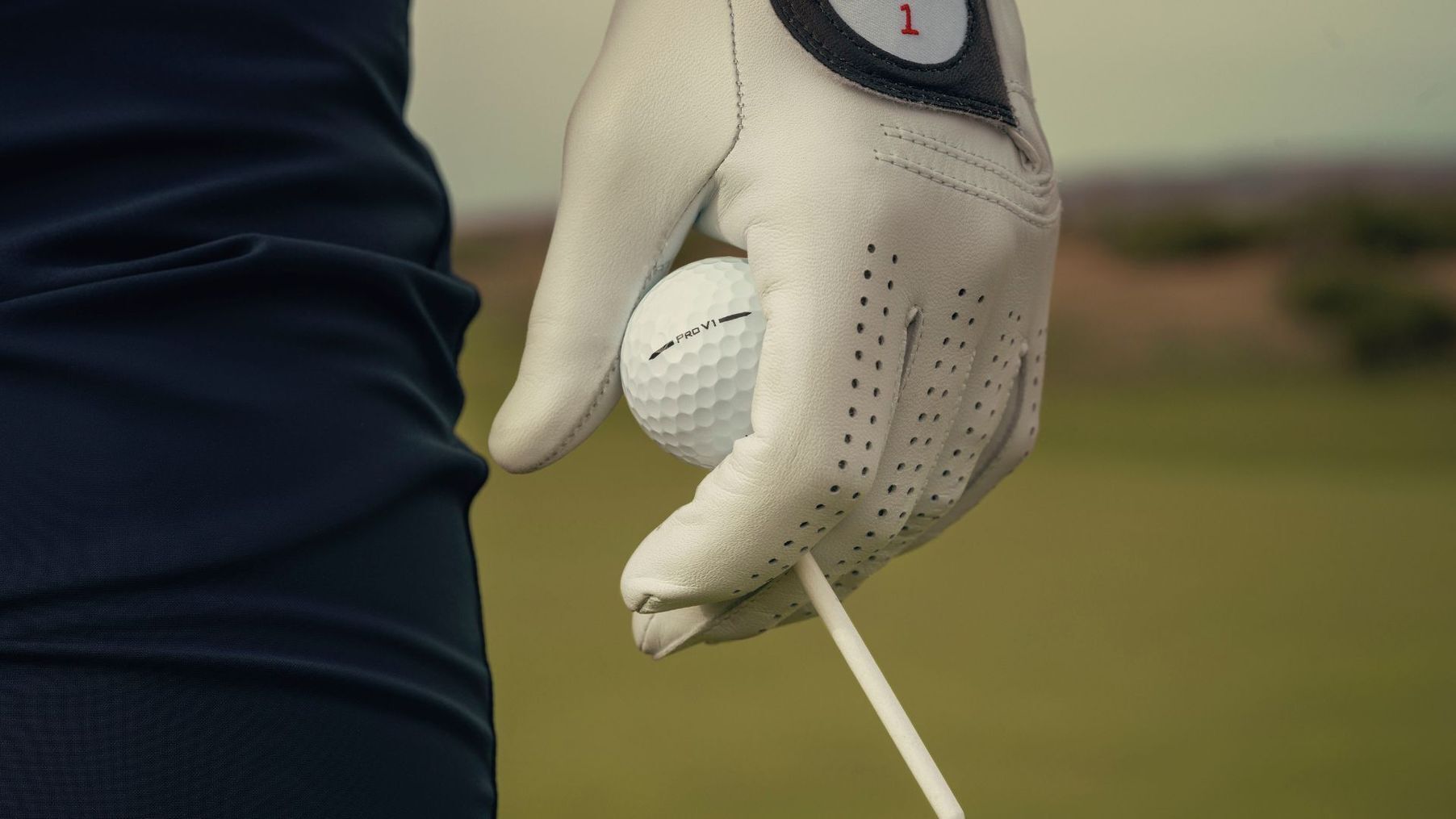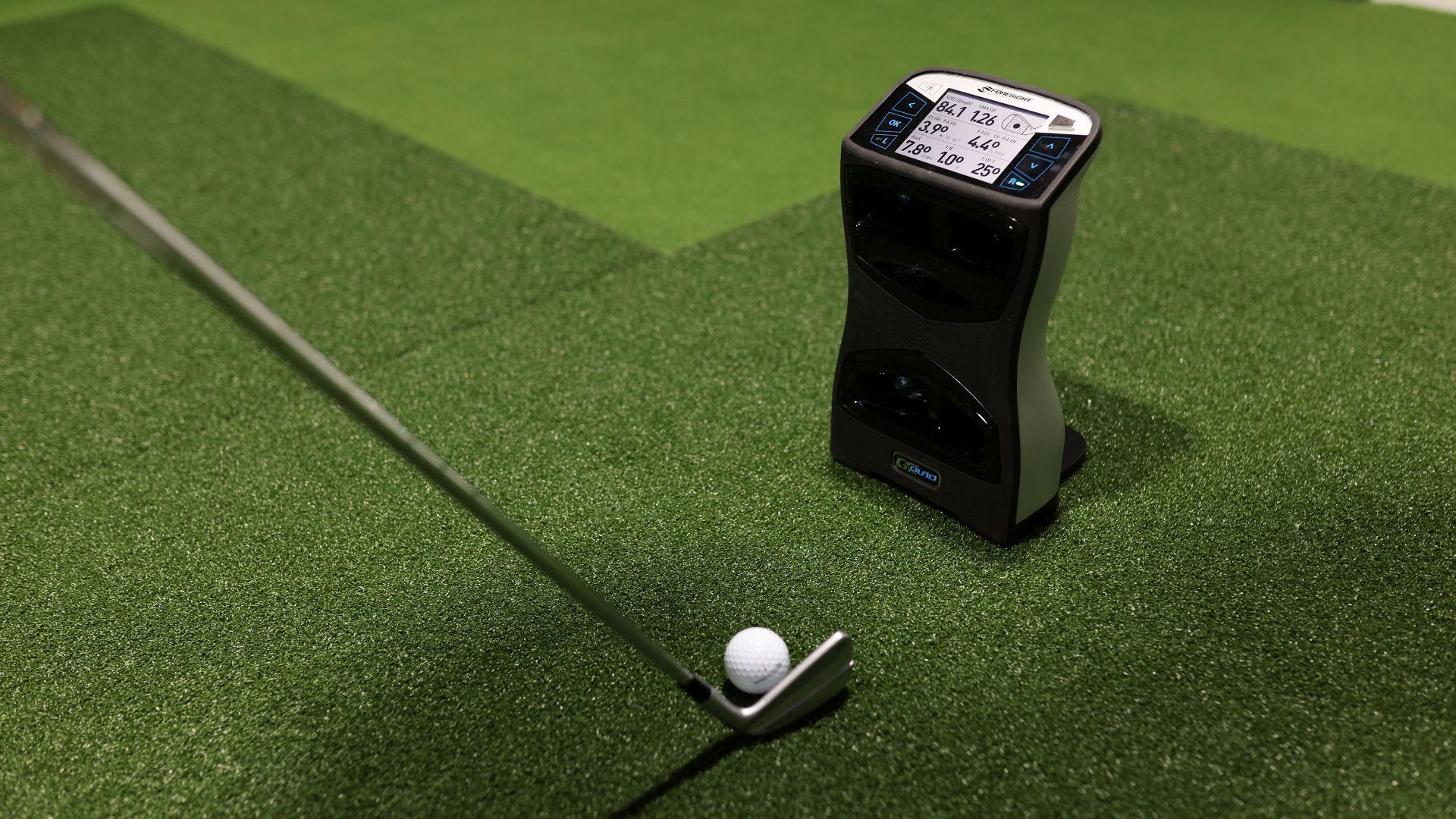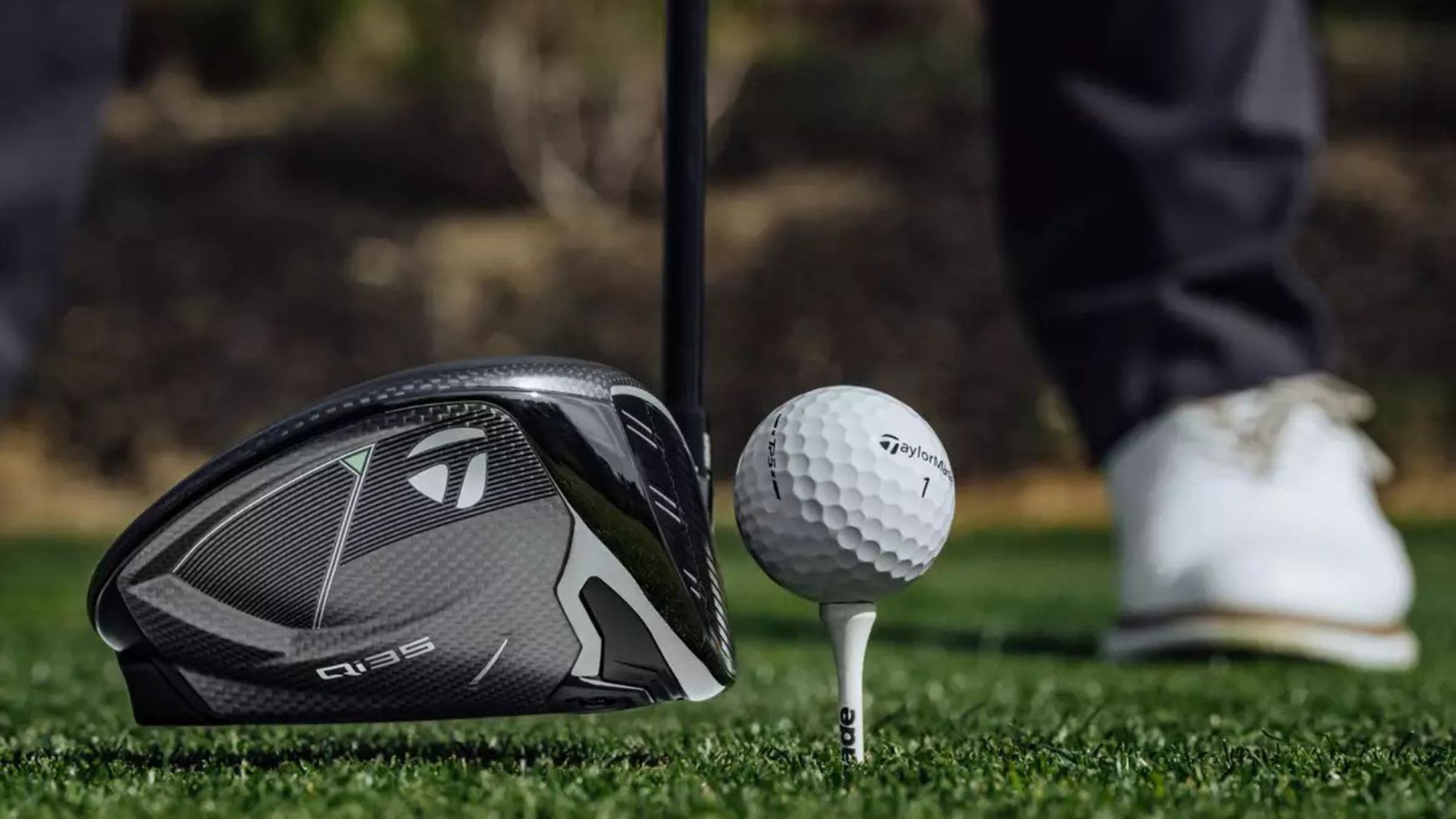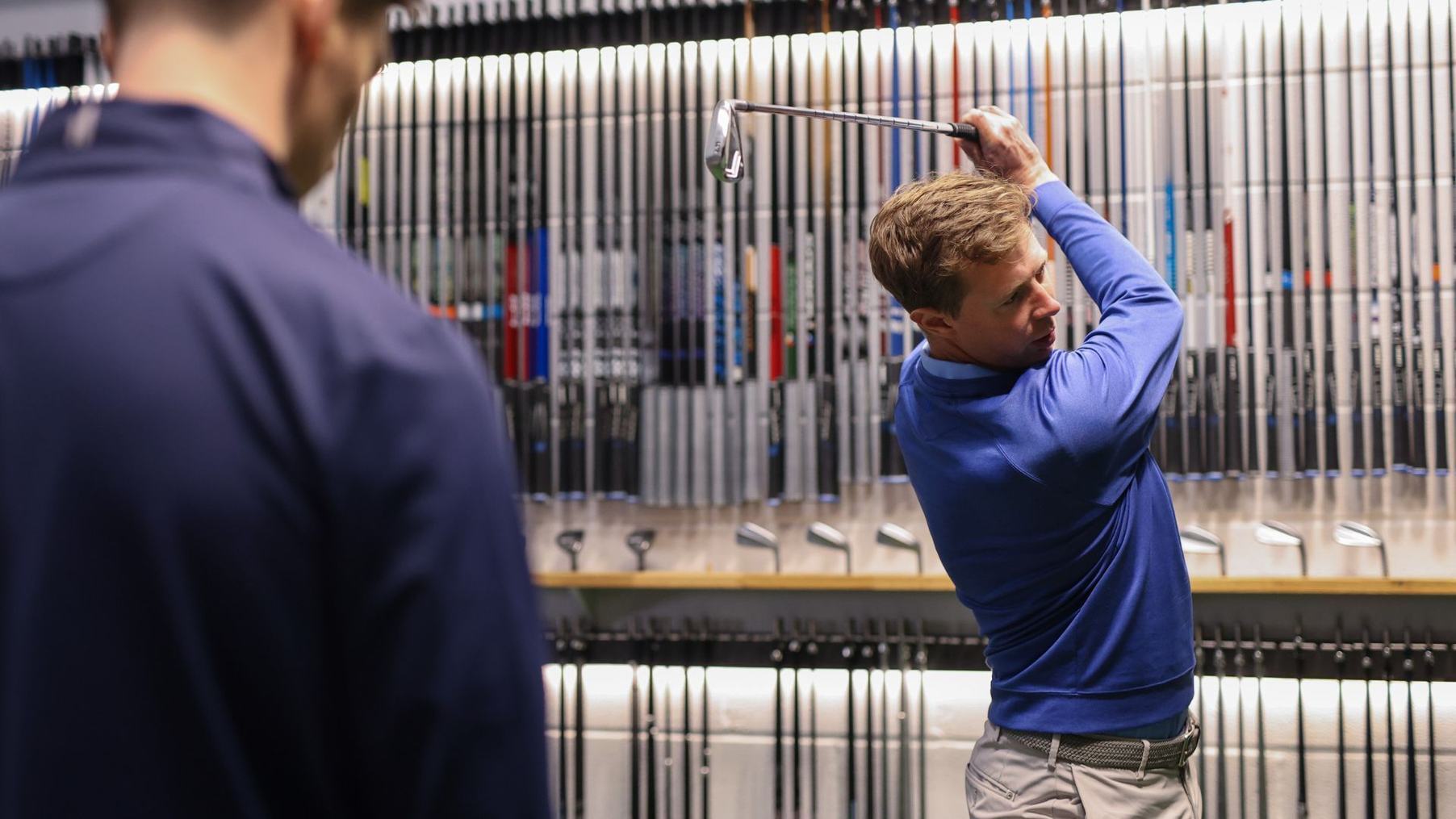It’s hard to believe that the earliest golf balls were made out of wood.
Wood was readily available, and skilled artisans could create a ball that could be hit with the golf clubs of the day.
Fast forward several hundred years, and the modern golf ball is a technical marvel designed to fly straighter, further, and have more stopping power than ever before.
Like golf clubs, we are confronted with a variety of golf balls that offer low spin and high spin, or you can select your golf ball based on your clubhead speed.
Today’s market offers balls in every imaginable colour, alignment style, and performance profile—the choice is endless, but not always helpful.
How do you know the golf ball you purchase is suitable for your game? How do you know it offers you the correct levels of spin, launch, control, and feel?
Many experienced fitters argue that golfers should be fitted for the right golf ball before they get fitted for their clubs. Can that be true?
Our guide will uncover the reasons why you should be fitted for the right golf ball, and to do that, we’ll look at the following critical areas:
- Why Spin Rate Is Crucial
- Ball Fitting vs Club Fitting
- Tackling Common Misconceptions About Golf Ball Purchases

Why Spin Rate Is Crucial
Many of us are starting to understand that achieving the correct spin rates helps add distance to our drives and enables us to control the ball around the green.
Faster players gravitate towards low-spinning drivers to maximise their numbers, and players looking for more stopping power around the greens benefit from a ball that offers more spin.
Understanding spin rates and their impact on a golf ball is an area that is somewhat less well-understood. If you rely on gaining a lot of knowledge from social media, many fitting experts create lots of content around clubs where they will talk about spin rates, but you’ll have to look a little harder to find much content around the golf ball.
To determine which golf ball would work well for our games, we can begin by examining the differences between low-spinning and high-spinning golf balls.
High-spin golf balls are designed to create shots with a higher trajectory on long shots and stop more quickly on pitch and chip shots.
Low-spin golf balls will naturally produce the opposite effect—lower trajectories on long shots and more rollout on pitch and chip shots.
Choosing the right golf ball is about getting the right combination to match all areas of your game.
Selecting the ball that provides lots of spin with your wedges could cost you distance off the tee because there is too much spin on the ball. Iron shots could equally be affected if you struggle to control the trajectory of the shot to keep it out of the wind.
Again, we see the opposite for the low-spin ball. The low spin might give you a few extra yards of roll from the fairway off the tee, but you could struggle to maximise carry distances with the driver.
The low spin ball could also prevent you from keeping the ball on the putting surface on approach shots with fairway woods, hybrids, and irons.
Judging delicate pitch and chip shots could be trickier if you can’t fly the ball closer to the hole and get it to stop quickly.
If you consider it from a fitting perspective, pairing a better player with a low-spinning driver can help bring spin numbers into a suitable range during a fitting session.
Those numbers can be achieved using the golf balls available during the fitting session, which might not be the same as what you use on the course.
If you play a higher-spinning ball, most of the work done during the fitting session can be undone, as you are left with the same issues of struggling to manage ball flight effectively.
We can see the same problems with every department of the golf bag, so how does a good club fitter address these issues?

Ball Fitting vs Club Fitting
Optimising spin and launch figures will help create more distance and a better trajectory for your shots. Creating an ideal “window” can be achieved through the type of head, where mass is focused, optimising adjustable hosels (for drivers, fairway woods, and hybrids), and marrying those up to the correct shaft.
Using the launch monitor, we can also measure the impact the golf ball has on those optimised figures.
At Nine By Nine Golf, we offer a range of premium and non-premium high-spin and low-spin golf balls for our golfers to try during their fitting sessions.
Our GC Quad launch monitor can accurately chart how different types of golf balls affect launch and spin numbers, and we can do this for every aspect of the game, from driving to chip shots.
We also don’t lose sight of the human element. Our experienced fitters will want to know the types of golf courses you play regularly. We can also inquire as to whether you prefer to work with the golf ball, allowing us to observe different shot shapes and trajectories.
You might not think the types of courses you play regularly would make much of a difference; you’d be wrong.
Playing a parkland-style course, which can be prone to getting waterlogged, might mean you need a lower-spinning golf ball to prevent too much spin on softer greens.
Firm, fast links-style courses may require a ball that offers more spin to help approach shots hold on slick surfaces or to help delicate pitch and chip shots stop closer to the pin from tight, hardpan lies around the greens.
All this information can help us build a picture of which golf ball could work best for your game and how that information fits into the overall fitting process.
Just like tuning a car engine won’t make sense if you ignore the tyres, optimising your clubs without finding the right ball leaves your performance incomplete.
Having a range of golf balls to hit during a fitting session is important to help ascertain the nuances in feel and sound.
Higher-spinning golf balls, such as a Titleist Pro V1X, will produce a higher-pitched, “clicky” sound at impact. While this is not noticeable with the driver, it becomes apparent in shots around the green and with the putter, where issues can arise. Not only does the noise at impact put some players off, but the ball can also feel a little harder, which, for some players, will give them less confidence in obtaining the control they covet.
Golf balls with different compressions can also make a big difference for golfers. Higher compression golf balls are worth considering if you have a faster swing speed and need to manage spin more effectively.
If you don’t have a lot of club head speed, a lower compression ball can help generate more spin to optimise carry distances and trajectory.

Tackling Common Misconceptions About Golf Ball Purchases
It’s very easy to get caught up in the trap that buying the best, premium-quality golf balls will help make us better golfers.
We can easily be swayed by how far the tour pros hit the ball and how they demonstrate exquisite control with their iron play and short game with their chosen golf ball.
We all want to use premium golf balls; however, the major stumbling block arises when considering the price of purchasing a dozen Titleist Pro V or TaylorMade TP5 balls.
Our fear of taking a brand-new Pro V out of the box on the first tee, then promptly hitting a crooked shot and seeing that brand-new ball fly off, never to be seen again, haunts us all.
Let’s be honest: how many of those reading this haven’t experienced the thought of how much that ball costs when we see it on its final journey, never to be found?
You’re then left with a conundrum: do you take another brand new ball out of the bag or find an older ball to play your penalty shot and maybe the rest of the round with?
Ben Griffin might not be a PGA Tour player with whom you are overly familiar. However, Griffin’s win at the Zurich Classic this year with partner Andrew Novak raised some eyebrows for the golf ball he was using.
Griffin was using Maxfli’s Tour X golf ball, which was introduced to the American market at the end of last year, with a price point of $40 (£30) for a dozen balls. This is a huge difference from what’s considered the top tier of golf balls, such as the Pro Vs, TP5s, and Chrome golf balls, which are all priced around the £50 mark.
Griffin’s win using the Maxfli ball wasn’t a fluke; he followed up with a second win at the Charles Schwab less after his victory in the Zurich Classic.
Griffin’s win further highlights the point that he is using the ball that is right for his game. To win on the PGA Tour requires every aspect of a player’s game to be in top form. Trusting how the golf ball performs, as well as maximising numbers, is crucial to playing consistently and being in a position to win.
Using premium-brand golf balls isn’t a wise investment if you're still new to the game or a higher-handicap player.
Golf balls at a cheaper price point can still offer high levels of performance for distance or replicate the feel of a more premium ball.
Innovation continues to occur with these lower-priced balls. Many of the alignment aids you see creeping into the higher-end premium balls started life in the less expensive models.
Alignment aids aren’t just useful for helping you line up putts; they’re also helpful in getting you lined up properly off the tee, which can improve your accuracy.
A variety of vibrant colours also makes lower-priced golf balls more appealing if you are new to the game and looking for something a little different.
If you are new to golf or a high-handicap player, it’s easy to look for golf balls that offer maximum distance, as distance is what you think you need to become a better player.
However, the reality is that you lose most of your shots with pitching, chipping, and putting.
Golf balls that are focused on offering distance will be weaker in providing spin and control around the greens, which can help improve your feel and consistency.
Working with a fitter, you can easily uncover the golf ball that’s best suited to your game.
To get more out of your game, you can just book a fitting session at Nine By Nine Golf and be sure to ask your fitter which golf ball is best suited to your game.

